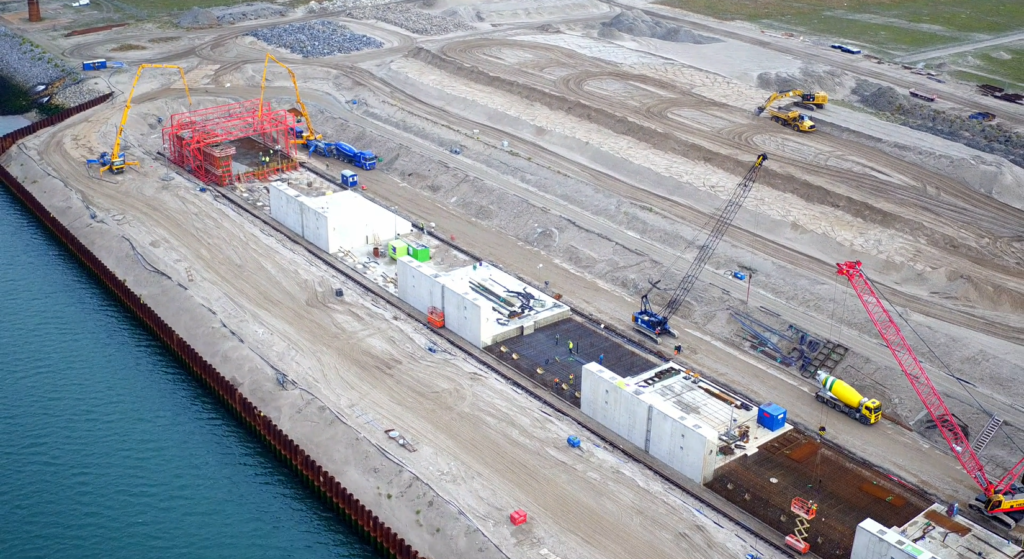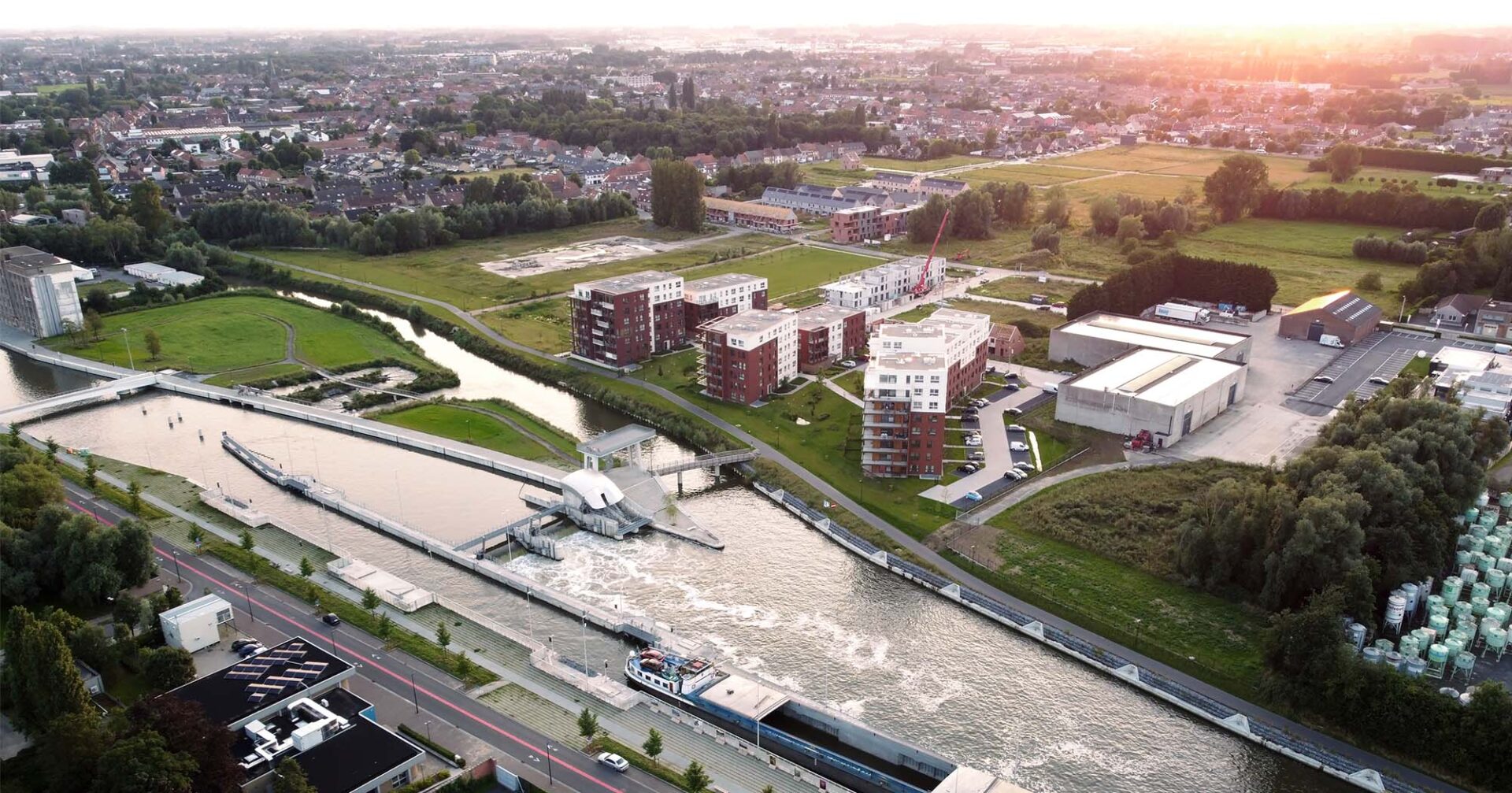
Port of Rotterdam worked on the expansion of the quay walls for these container terminals for its customers Rotterdam World Gateway and APM Terminals at Maasvlakte 2. This expansion included the construction of a nearly 1.9-mile-long deep-sea quay wall, along with an associated rear crane track.
After challenging projects such as the Offshore Terminal Rotterdam and the HES Hartel Tank Terminal, MariTeam had the opportunity to work on this ambitious project as well. MariTeam, a collaboration between MUC, Iv-Infra, and SBE, provided the Preliminary Design, Final Design, RAW specifications, and site management and supervision.

During the design phase, MariTeam organized a large pile load test. Various types of foundation piles were loaded to failure, while strain measurements were conducted at the same time with fiber optic cables. The goal was to optimize the design of the deep-sea quay and the rear crane track. MariTeam designed the test setup, which could generate a load of 2,500 metric tons, and monitored both the execution of the tests and the interpretation of the results.
In the summer of 2020, the plans for the new deep-sea quay were presented. A few months later, the project was awarded to the consortium HBV, consisting of Hochtief, Ballast Nedam, and Van Oord.


The first significant step was taken in the fall of 2021: the installation of the tubular piles, which are part of the combi-wall. These piles were accurately placed using a pile frame to ensure the sheet piles fit between them and form a soil retaining structure.
The top of the deep-sea quay is at NAP+16.4 feet, while the harbor bottom extends to NAP-78.7 feet, resulting in an impressive retaining height of nearly 100 feet.

The superstructure of the quay was built with a relief floor structure, divided into 80 segments. Each segment is approximately 75 feet long, 60.7 feet wide, and 23 feet high. This structure is founded on the combi-wall and vibro-piles, reducing pressure on the combi-wall.
At the beginning of 2023, a significant milestone was reached: no less than 10,000 metric tons of reinforcement steel was processed!
Around the same time, a unique bending-tension test was conducted on the anchor rods for the ground anchors. MariTeam and HBV collaborated on a test setup to demonstrate plastic hinge formation in the anchor rods, necessitated by the bending of the helical injection anchors due to ground subsidence. These rods were simultaneously tested for tensile and bending forces, and the plastic hinge formation was successfully demonstrated.

In the fall of 2023, the first section of the rear crane track was poured, which is a continuous concrete beam with shrinkage strips of 10 feet between the 65-foot segments. The rear crane track is also founded on vibro-piles.

In November of the same year, the Port of Rotterdam’s dashboard went live. This smart system monitors all structural elements of the deep-sea quay. Five tubular piles, ten vibro-piles, and 22 SI anchors are equipped with fiber optic cables to measure strain and temperature.
MariTeam helped the Port of Rotterdam convert this data into forces and advised on the dashboard’s development. This system visualizes the deformation and forces of the quay, aiding in understanding the actual resistance during its operational lifespan.
At the end of 2023, dredging operations began, bringing the quay to life. In early 2024, the last of the 2,322 vibro-piles was installed.
Finally, in the second and third quarters of 2024, the quay was handed over to the Port of Rotterdam and put into operation by RWG and APMT. This marked a new chapter in Rotterdam’s maritime history.



From Antwerp to India, SBE is taking steps in progress and innovation all over the world. Below you will find a selection of our most recent projects.
Curious about what is happening within SBE? Or in which projects we are involved? Through these newsitems we will keep you informed about our projects and the ins and outs within SBE.


